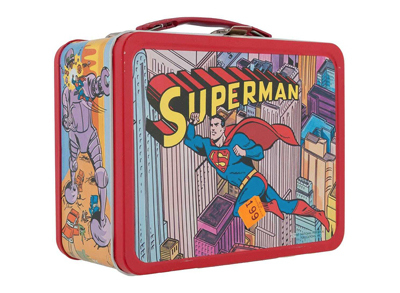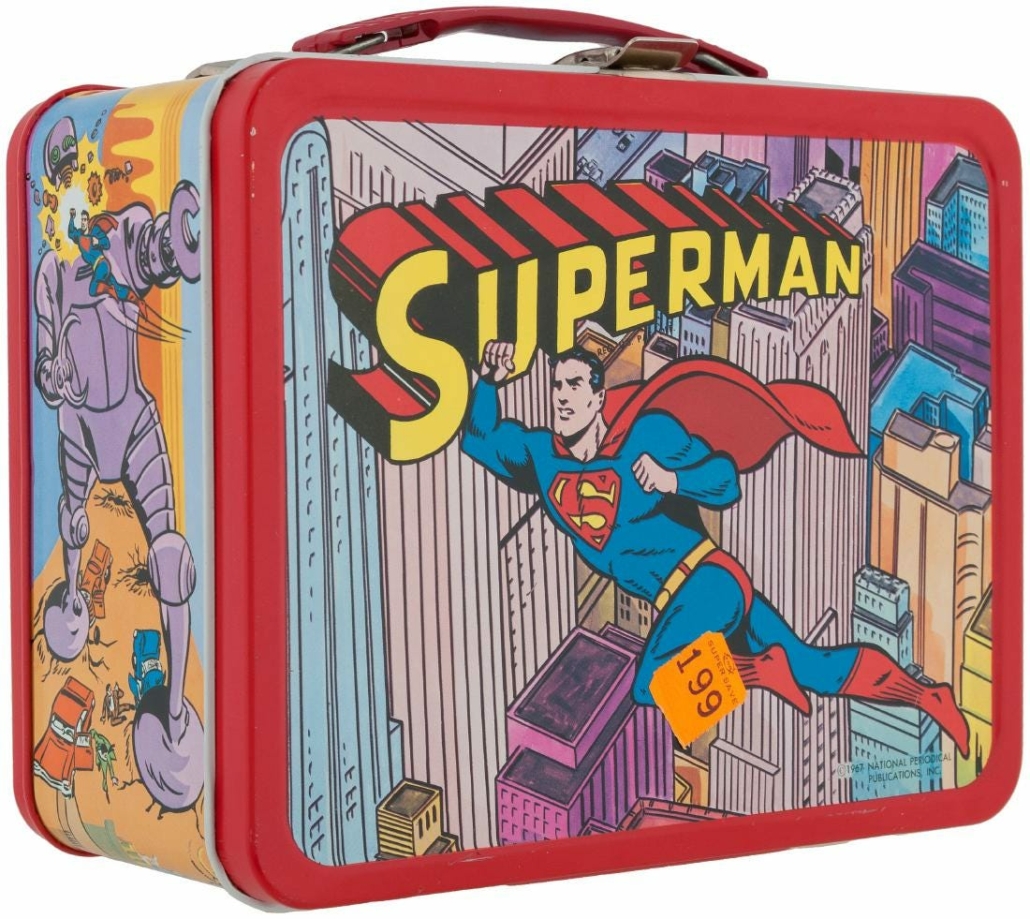
NEW YORK — For many kids of the postwar generation, the best part of back-to-school shopping was not the clothes or the annual trip to Buster Brown to get a new pair of shoes, but choosing a lunchbox. Brown-bagging your PB&J sandwich became a thing of the past with the advent of bright and colorful metal lunchboxes decorated with child-friendly characters or favorite media stars. In school cafeterias from as early as the 1930s through the early 1980s, a parade of sturdy lunchboxes featured fictional and real-world stars such as Mickey Mouse, Batman, Strawberry Shortcake, Superman, the Beatles and Scooby Doo.
All good things come to an end, though, and the era of steel lunchboxes was essentially finished by the early ’80s after a group of Florida moms, concerned about the prevalence of head injuries caused by schoolkids errantly (or deliberately) swinging the heavy containers, prompted state legislatures to ban them as “lethal weapons.” Vinyl and other soft-material lunchboxes filled the gap, but for collectors looking to buy back childhood memories, the old metal lunchboxes are it. Originally retailing for a few dollars each, these vintage collectibles, especially if they still have their original glass-lined Thermos, can go for several hundred dollars to a few thousand.

Lunchbox scholars haven’t yet settled the question of when the first metal lunchbox made for children appeared in the United States. Some say the first was produced in 1920 by the American Thermos Bottle Co., of Norwich, Connecticut, which was later renamed King Seeley Thermos or KST. The Milwaukee tinware firm of Geuder, Paeschke, and Frey was licensed by Disney to create and sell a lunch kit featuring Mickey Mouse’s image from 1935 to 1937. These early oval-shaped examples were expensive during the Depression era, so few sold.
Pop-culture-driven motifs dominate this genre, but in the 1950s Western graphics were big, as evidenced by a Hopalong Cassidy lunchbox made by Aladdin Industries in 1950. It is painted royal blue and features a central image of Cassidy in a desert scene, wearing a cowboy hat and carrying a pistol. The Smithsonian’s Museum of American History has an example in its collection.
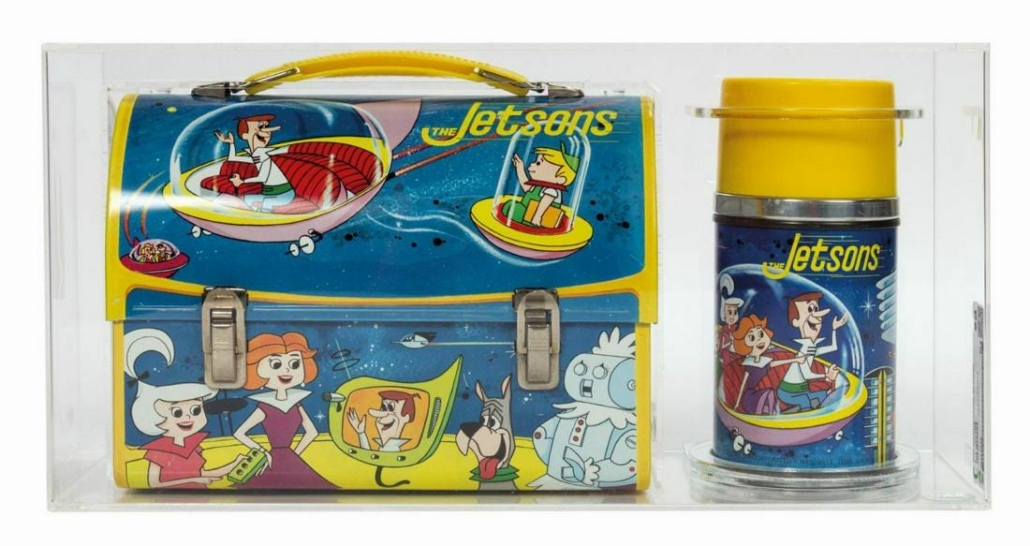
“Some of the top-selling lunchboxes are still the same as those from the ’90s, when lunchbox collecting really took off. Cult shows like Lost In Space, Munsters and Star Trek as well as The Beatles, Superman and Batman are still highly sought after,” said Alex Winter, president of Hake’s Auctions in York, Pennsylvania. “Most often when someone gets into lunchbox collecting, they don’t hold back. Collecting by theme or character has its appeal, but so does just assembling a large all-encompassing collection. One you start, you tend to get hooked and branch out as much as you can.”
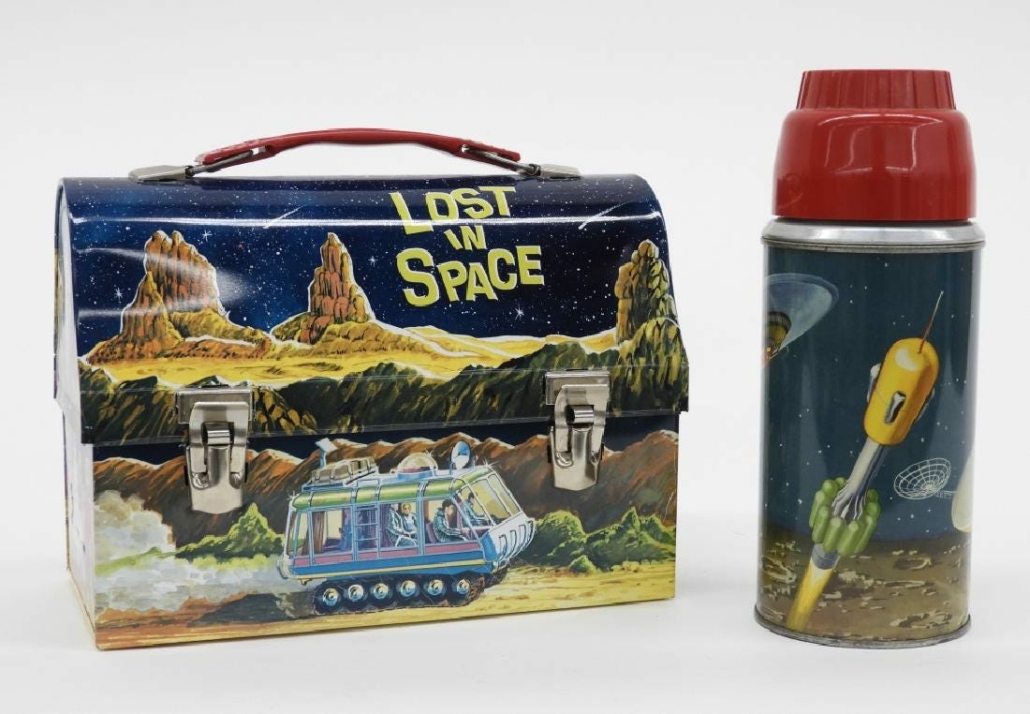
Winter said the 1960s are a particularly strong decade for lunchbox collectors and represent something of a golden age for the form. The ascendant Pop Art aesthetic, as well as the futuristic promise of space exploration reflected in TV shows such as Lost in Space and The Jetsons, yielded some of the most attractive lunchbox designs of the era.
“The 1960s seem to be the most popular decade, and the one that had the most classic boxes produced,” Winter said. “Boxes from the ’70s and ’80s have gone up in value as well over the last decade or so, as those have now gained traction from the generation that carried those to school.”
Superheroes are a staple of the collectibles world, and lunchboxes are no exception. An unused Superman lunchbox, complete with its Thermos, went for $2,200 plus the buyer’s premium in March 2017 at Hake’s Auctions.
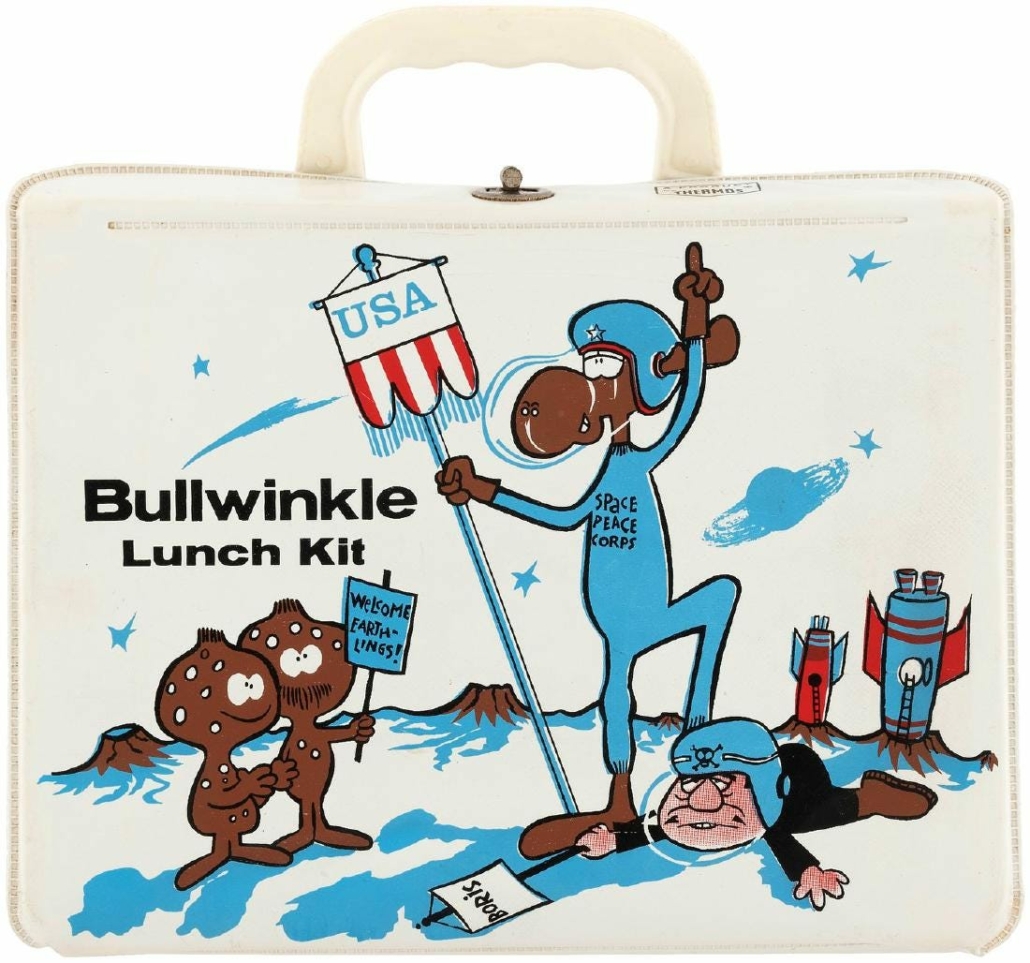
Cartoon characters are perennially popular, too. A King-Seeley Thermos Company vinyl lunchbox with Thermos featuring Bullwinkle, the moose from TV’s Adventures of Rocky and Bullwinkle, sold for $1,300 plus the buyer’s premium in November 2017 at Hake’s Auctions. Bullwinkle is shown on the moon wearing a “Space Peace Corps” spacesuit, holding a USA banner, and posing with one foot on the defeated villain, Boris Badenov. The lunchbox was produced in blue as well as white, although fewer than 10 examples of the white version are known; it’s likely it never went into full production.
Collectors appreciate the nostalgia value of vintage lunchboxes as well as the artistic qualities. “Once you start collecting, you tend to go back further in [the] era, even to a time when you may not have been born. It is the bright and colorful graphics on those attractive metal boxes that draw you in,” Winter said. “The wide range of iconic pop culture subjects emblazoned on the lunch kits just seems to have a great appeal to collectors. And you can display a rather large collection in a smaller space, so an impressive display is easily manageable.”
# # #


